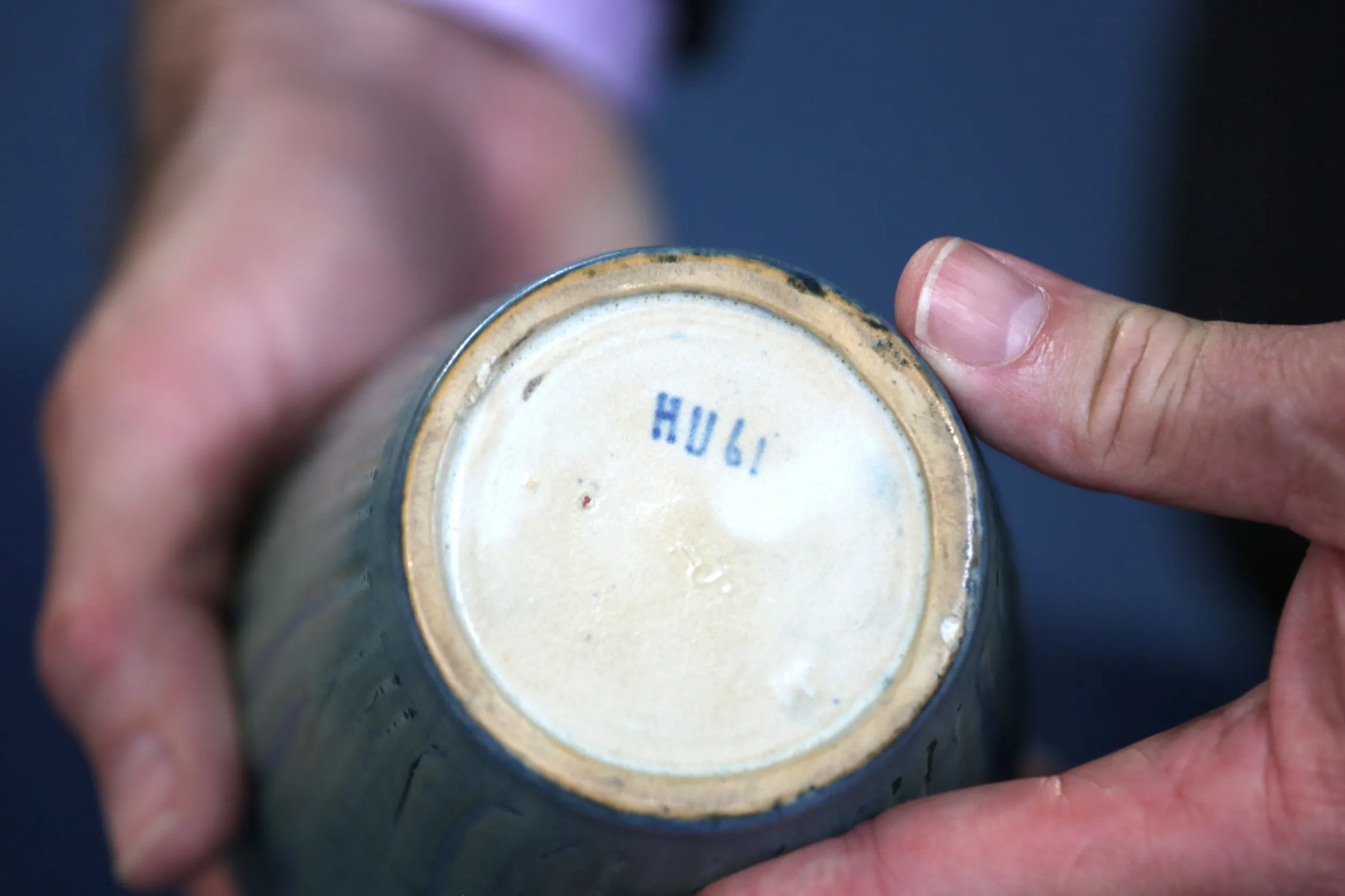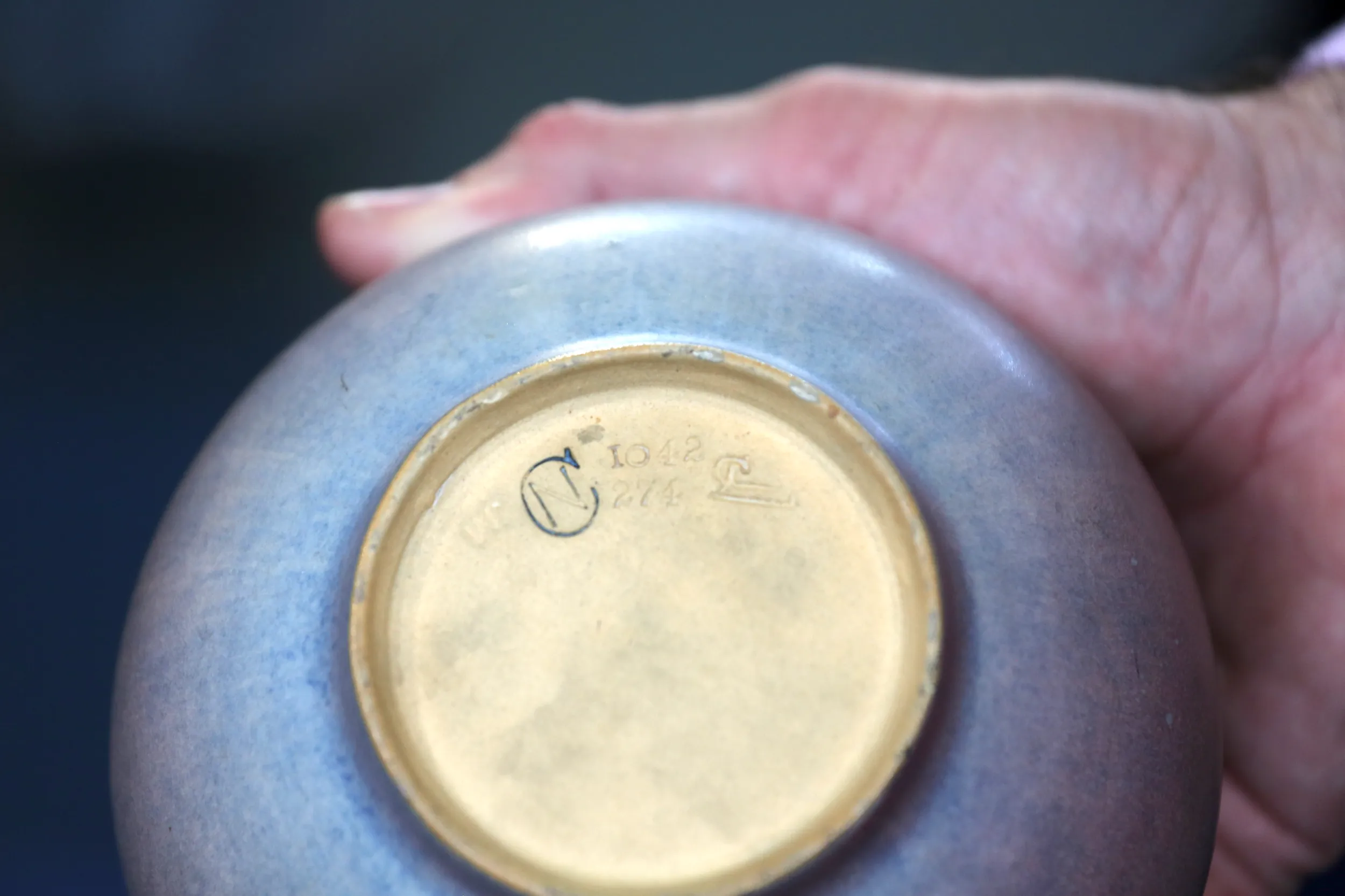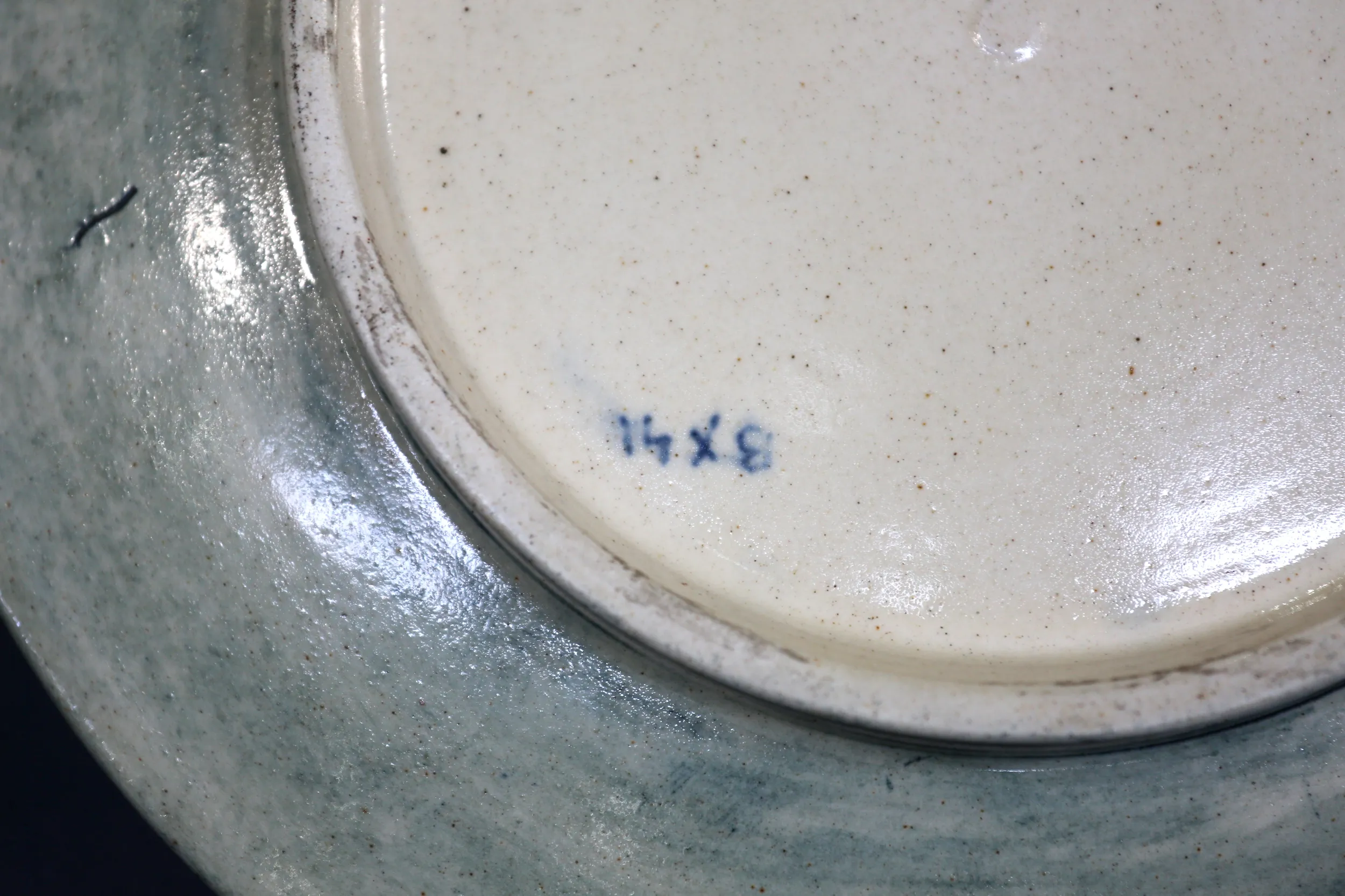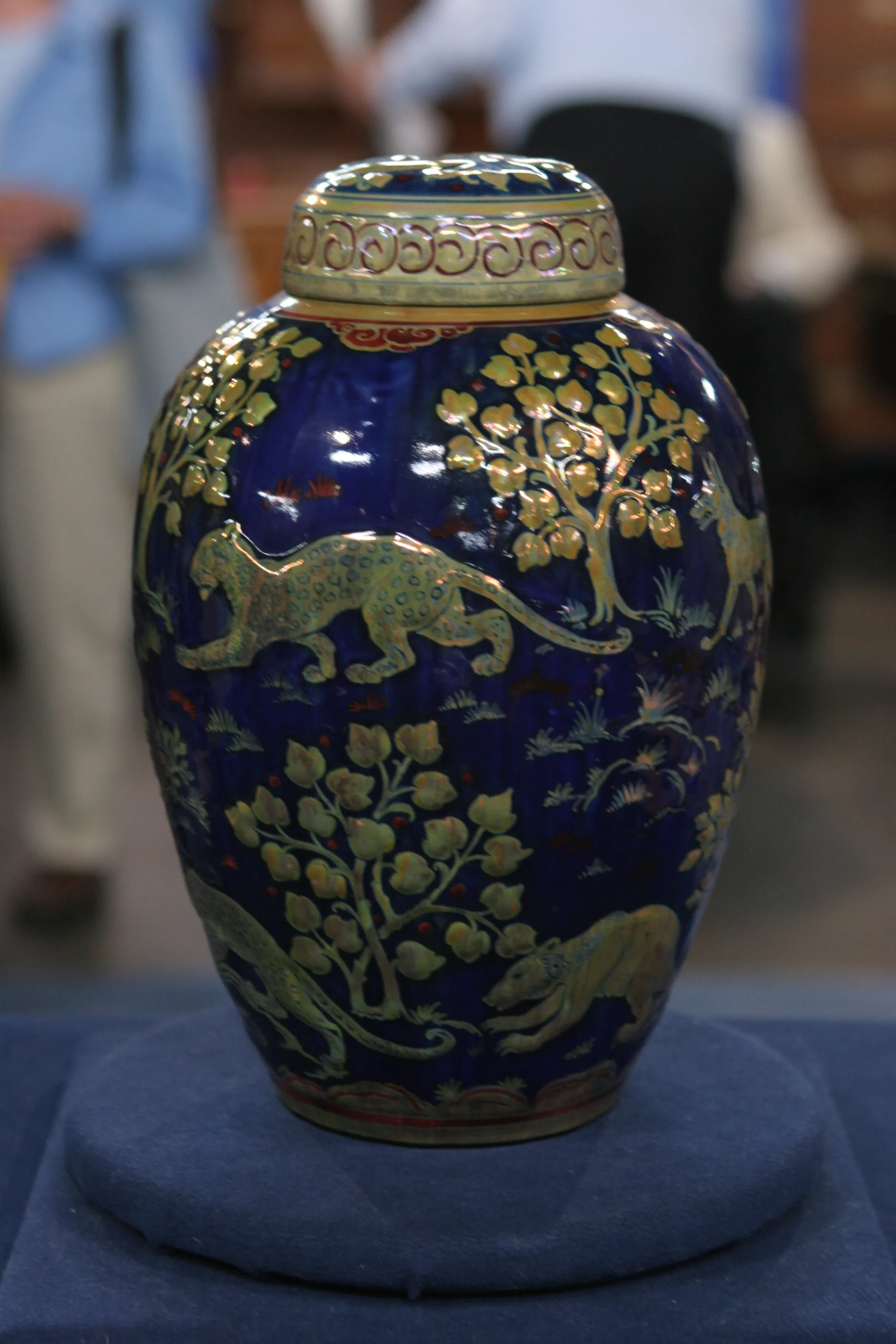GUEST: I have a great-aunt who went to Newcomb and had friends during the period when they were doing this work, and she gave me this. She had a large collection. A lot of the pieces are on view now at Newcomb, and these were just some pieces she gave me because I admired them.
APPRAISER: We'll start with the one closest to you, which is a middle-period piece from the '20s with carving, with flowers. This is unusual for several reasons. It's got four handles, and most Newcomb is not handled. The carving is a little deeper than usual, and the background color shades from purple to blue to pink. And that coloration-- most Newcomb, as you can see, is blue to white. Not in the case of this piece. So while it's a later piece, and the later pieces tend to have less value, I think this one is rather exceptional in those ways. The artist on this piece is Cynthia Littlejohn. You don't see a lot of her work. So the Newcomb mark, other factory marks, such as the date, the '20s is written in there in letters, they have a letter dating system. So the second piece is an earlier one, it's a transitional piece, which means it was a transition from high-glaze pottery to matte-glaze pottery. That runs from about 1908, 1909, to about 1915. They have a waxy quality to them, they're not quite matte, they're not quite high glaze. This one's special because the decoration goes from top to bottom. Most Newcomb has floral decoration on the bottom or the top, and then a blank area. This one, the entire surface of this pot is captured with modeling, with carving. This is a hand-thrown pot that someone then carved the design into, and then painted, and it's got multiple colors, which is also good. It's got yellow, white, blue, green. You could see the way the blue comes through the leaves around the bottom. This is a really colorful transitional piece, so quite nice. And then, finally, this tour de force, this plate. A woman reading a book to her two girl children. Newcomb was in New Orleans. It started after Sophie Newcomb died of diphtheria, and her mother wanted to have a place where women can learn to be part of the workforce, where they can be empowered. So they brought them into the workforce by first teaching them the applied arts. One thing I do want to point out, the mark on the back of this piece, that would have been the Newcomb mark, is crossed out entirely. And normally, when you see the mark crossed out, it means the piece is a second. There's nothing wrong with this piece. I think this is a family piece, and they meant to keep it, so it was marked as unsalable, and that's why we see the Newcomb mark scratched out. Also, an early signature for, I believe, Sadie Irvine. I've never seen her sign it that way before. All indications of a singular extraordinary piece of early high-glazed Newcomb pottery. The date on the plate-- even without knowing the dating mark on the back, I would date this to 1905. In terms of the values, the least expensive is the youngest piece. Between $1,500 and $2,000 these days at auction.
GUEST: (gasps)
APPRAISER: Transitional piece, today, $2,500 to $3,500 at auction.
GUEST: Wow.
APPRAISER: And finally, this plate, today at auction, it's between $10,000 and $15,000, but that's a third of what it would have brought about a decade ago, so still worth a lot of money. The three pieces together...
GUEST: You are kidding.
APPRAISER: ...are between $15,000 and $20,000 at auction, but not quite where they used to be.
GUEST: Oh, my goodness! I'm really, really surprised about the prices.















